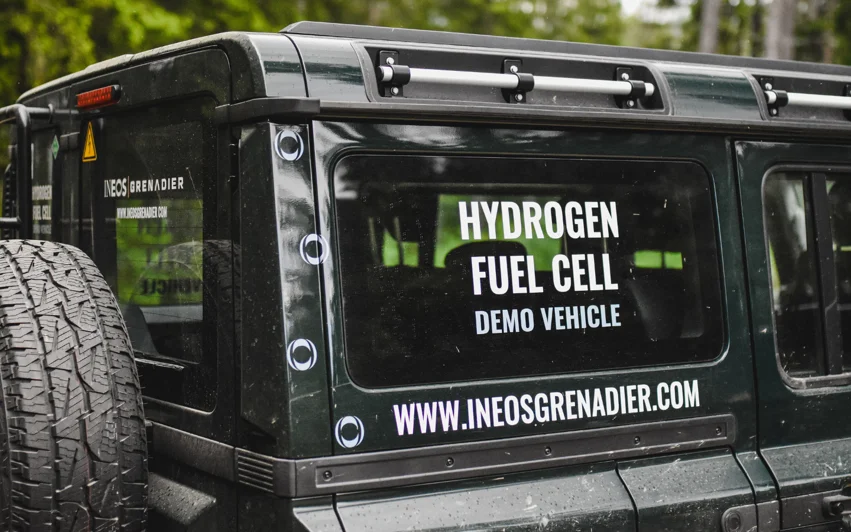For the environmentally conscious off-roaders among you, Ineos has unveiled a Grenadier that emits nothing but water vapour after it fit the four-wheel drive with a hydrogen fuel cell powertrain.
Ineos believes that hydrogen is a “key fuel of the future”, rather than relying on going fully electric like most carmakers seem to be doing these days. This rings especially true when it comes to traversing long distances in remote places where electric vehicles can’t always be charged.
With that in mind, the off-road brand partnered with Austrian engineering supplier/powertrain consultancy AVL to fit the Grenadier with a BMW-derived hydrogen fuel cell, the most advanced and powerful one in the automotive sector apparently.

To make it all fit, the ladder frame chassis had to be modified, as well as the rear axle to accommodate the torque vectoring electric motors. Ineos likes to refer to this as “gecko capability” since torque vectoring allows for greater control and manouverability off the beaten path.
You’ll notice that the bonnet has been raised slightly which has been done to accommodate the extra height of the fuel cell, a feature that wouldn’t be present if the model made it into production.
Speaking of production, the Grenadier FCEV is merely a prototype at this point but it’s possible we could see a customer version in the future that would sit alongside its upcoming EV.
“The hydrogen-powered Grenadier Demonstrator along with our all-electric model due in 2026, shows Ineos commitment to net zero,” says Lynn Calder, CEO of Ineos Automotive.
“BEVs are perfect for certain uses, shorter trips, most private car journeys and urban deliveries, whilst Hydrogen FCEVs are more suited for longer trips, heavy duty cycles where batteries impact too much on payload and where long range between stops is necessary.”


